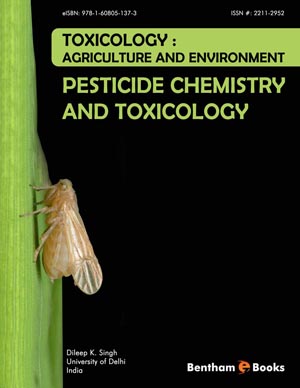Abstract
In this chapter, we have described the path of exposure to toxicants, various toxicological symptoms and their antidotes. Persons who are frequently involved with pesticides application should become familiar with the signs and symptoms of pesticide poisoning and get immediate help from a local hospital, physician, or the nearest poison control center. Treatment for poisoning with OP and carbamate insecticides involves the use of atropine which counteracts the muscarinic effects, keeping the individual alive. Antidotes are remedy or other agent used to neutralize or counteract the effects of a poison. Medical antidotes are available to neutralize the poisoning effects of the pesticides. However, if it is taken improperly then these antidotes can be more dangerous than the effects of the pesticide itself. Both carbamate and organophosphate pesticides attack cholinesterase in the blood and make it ineffective. Physician can determine the patient’s base level of cholinesterase by a simple blood test. If the cholinesterase level has decreased, the patient has been overexposed to either organophosphate or carbamate pesticide. One should avoid further contact with these pesticides until his cholinesterase level has returned to normal. In severe cases, medical antidotes must be given to the patient.
Pesticides are a diverse group of substances with a potential for varied toxic effects. They can enter the human body in three ways i.e. by absorption, through the skin or eyes (dermally), through the mouth (orally), and by breathing into the lungs (inhalation).
Keywords: Exposure; Acute and Chronic toxicity; Therapy and Antidotes.






















